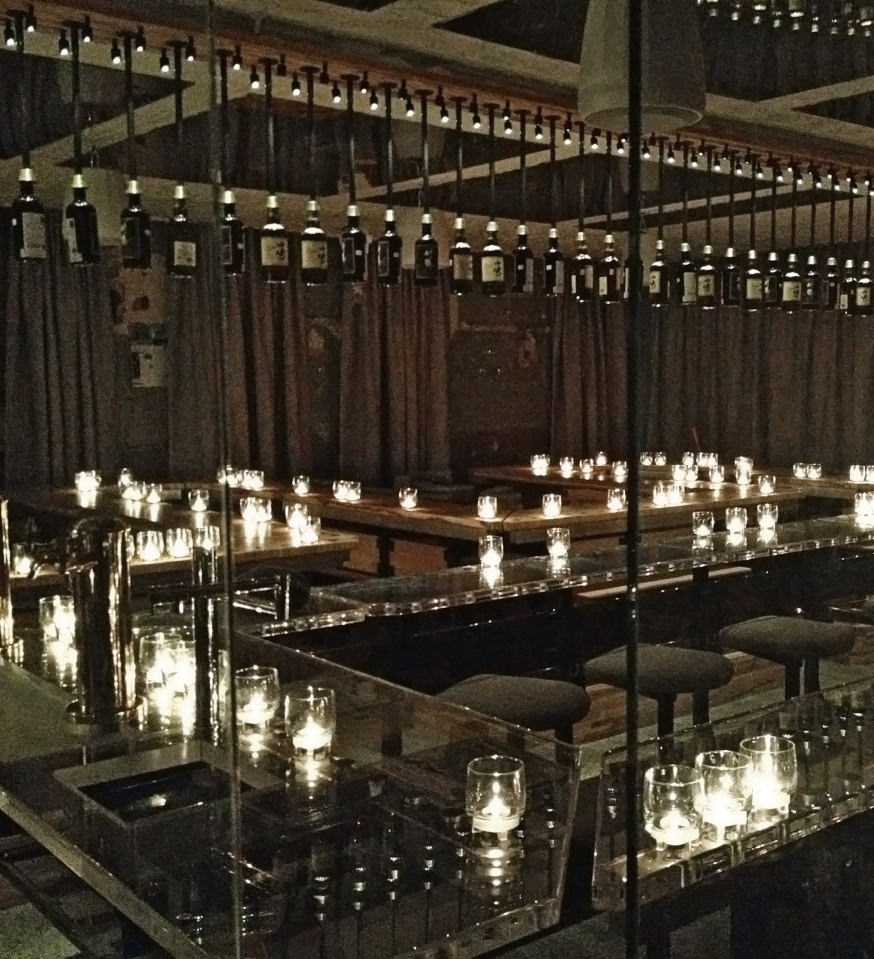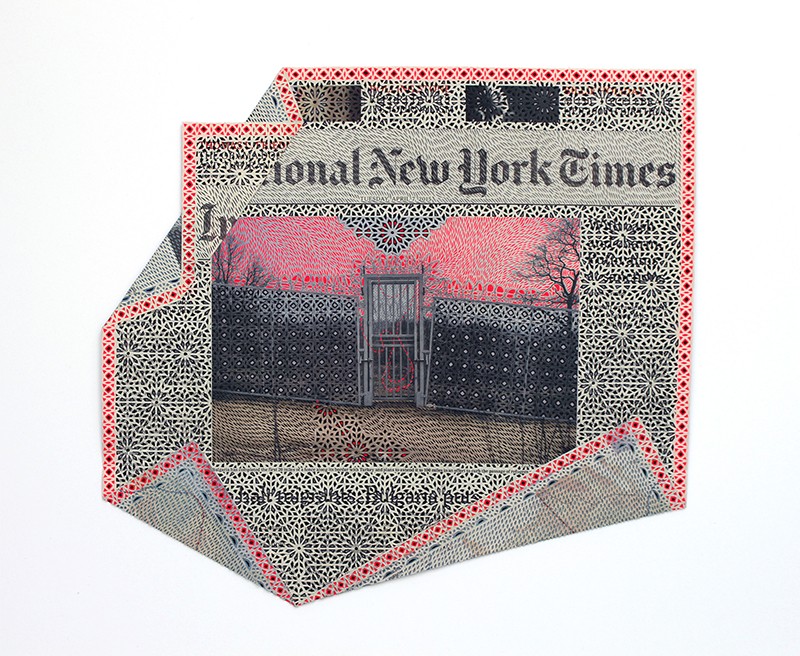-
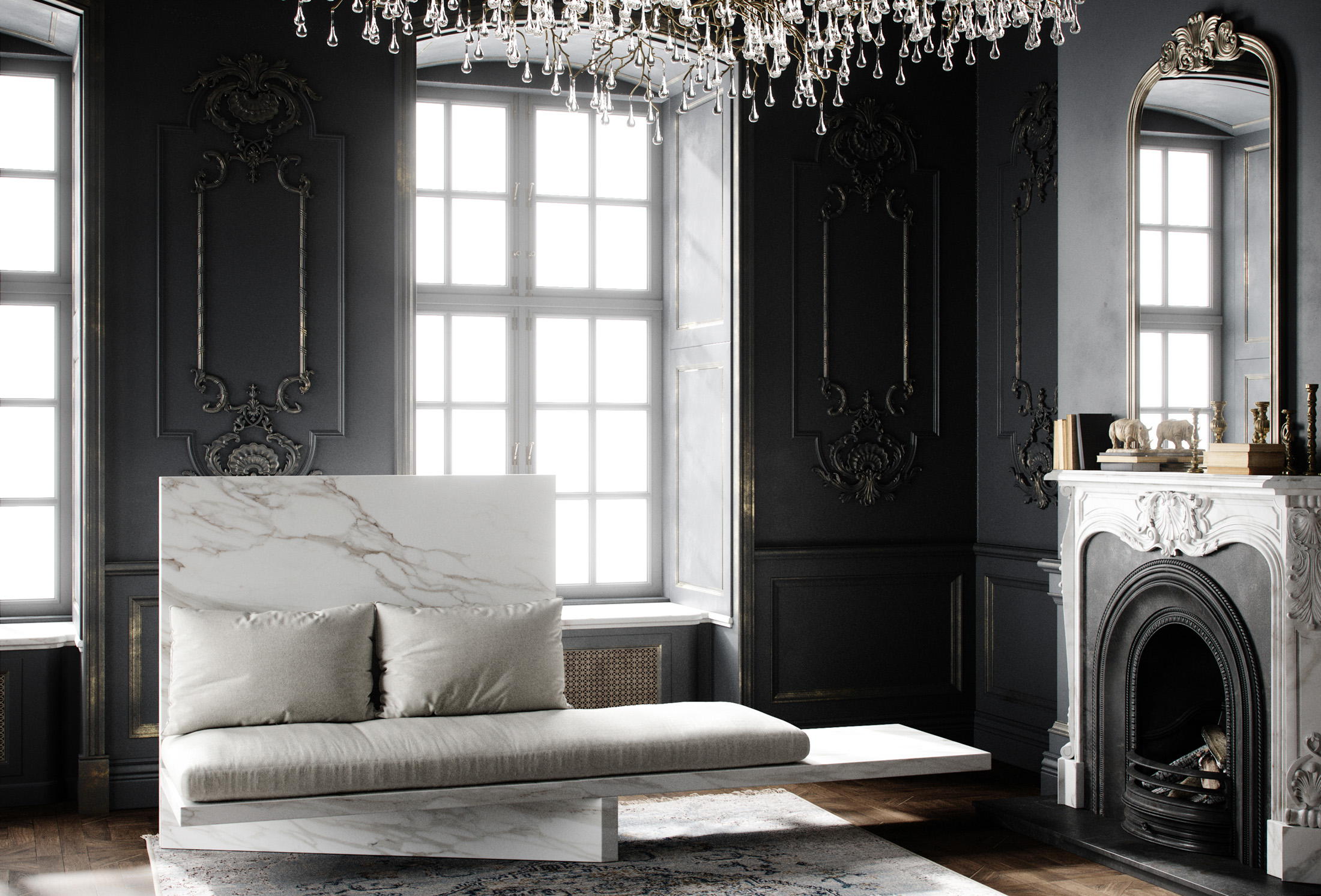
Some Are Born to Sweet Delight sofa.
-
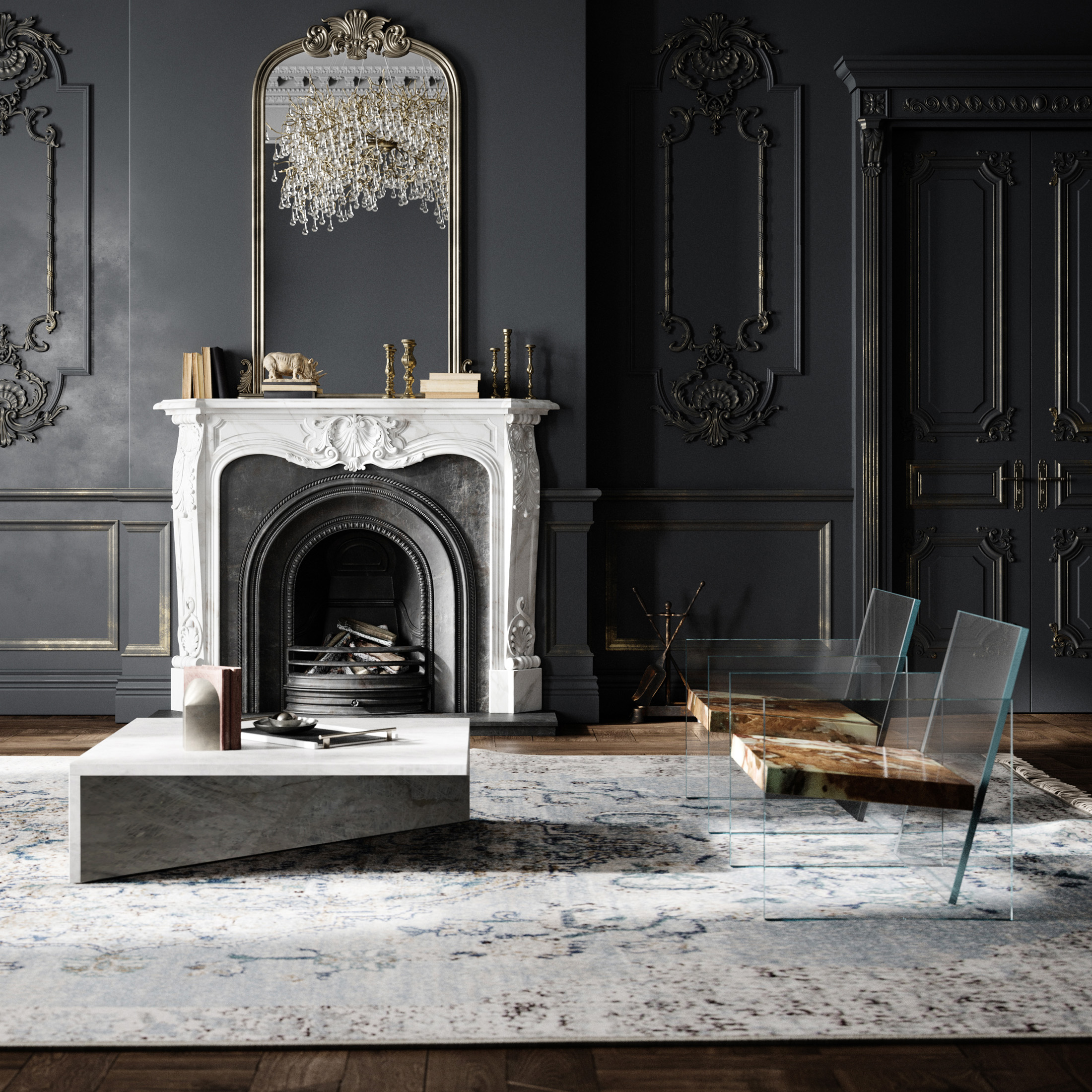
How Fragile This Love chairs in limited edition brown onyx.
-
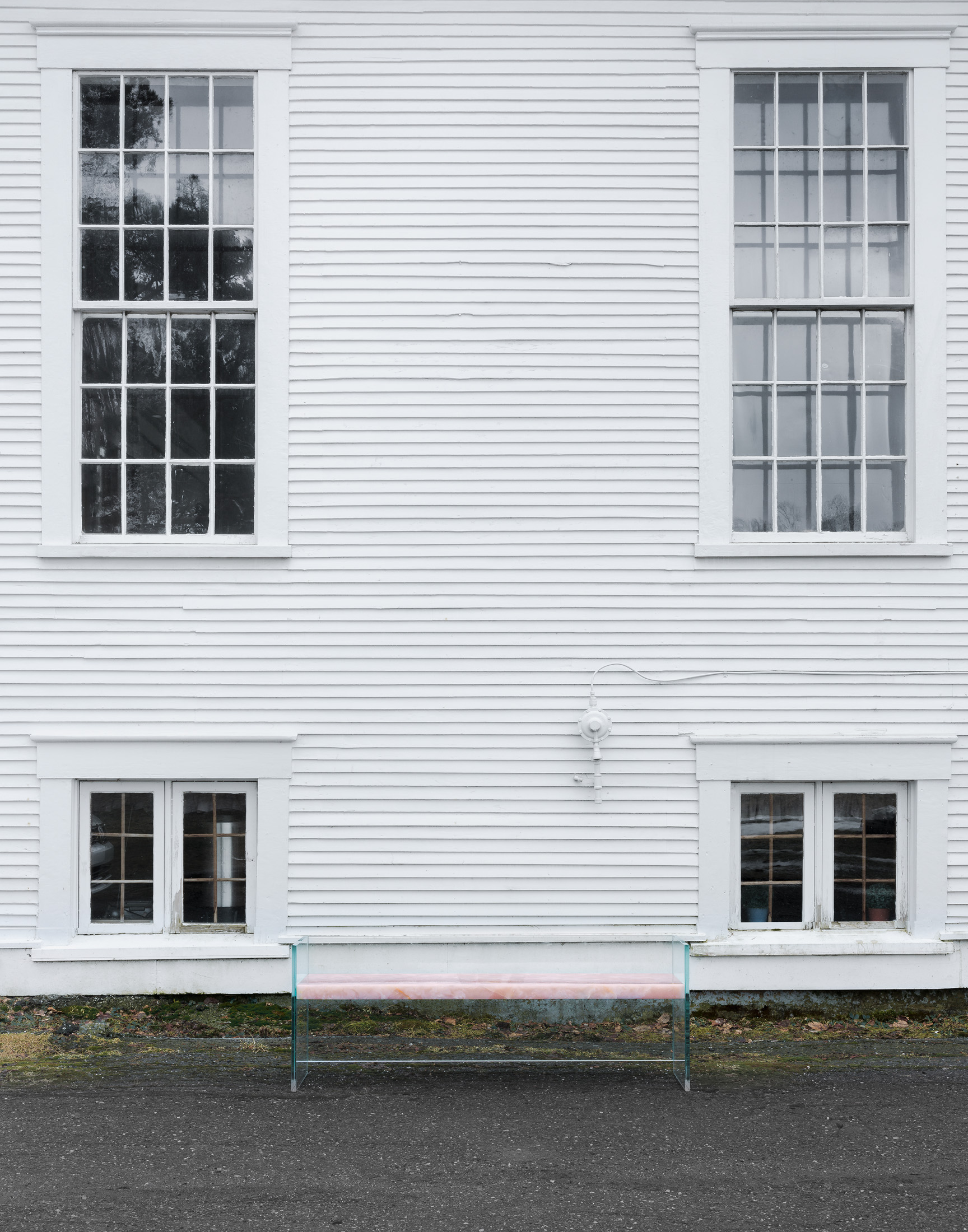
Where We First Met bench.
-
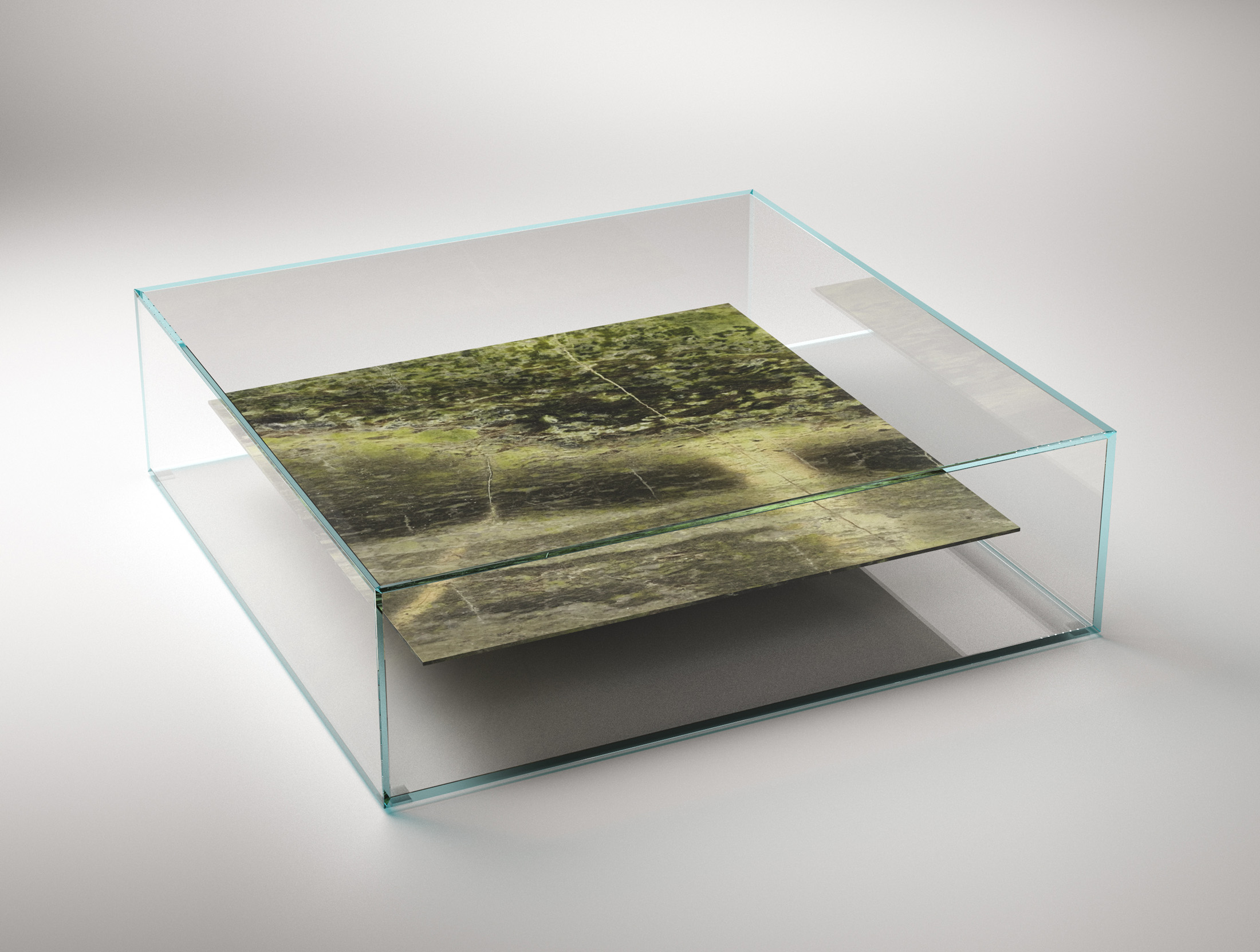
At Swim – Two – Tables coffee table.
-

Heart of Gold table lamp.
-
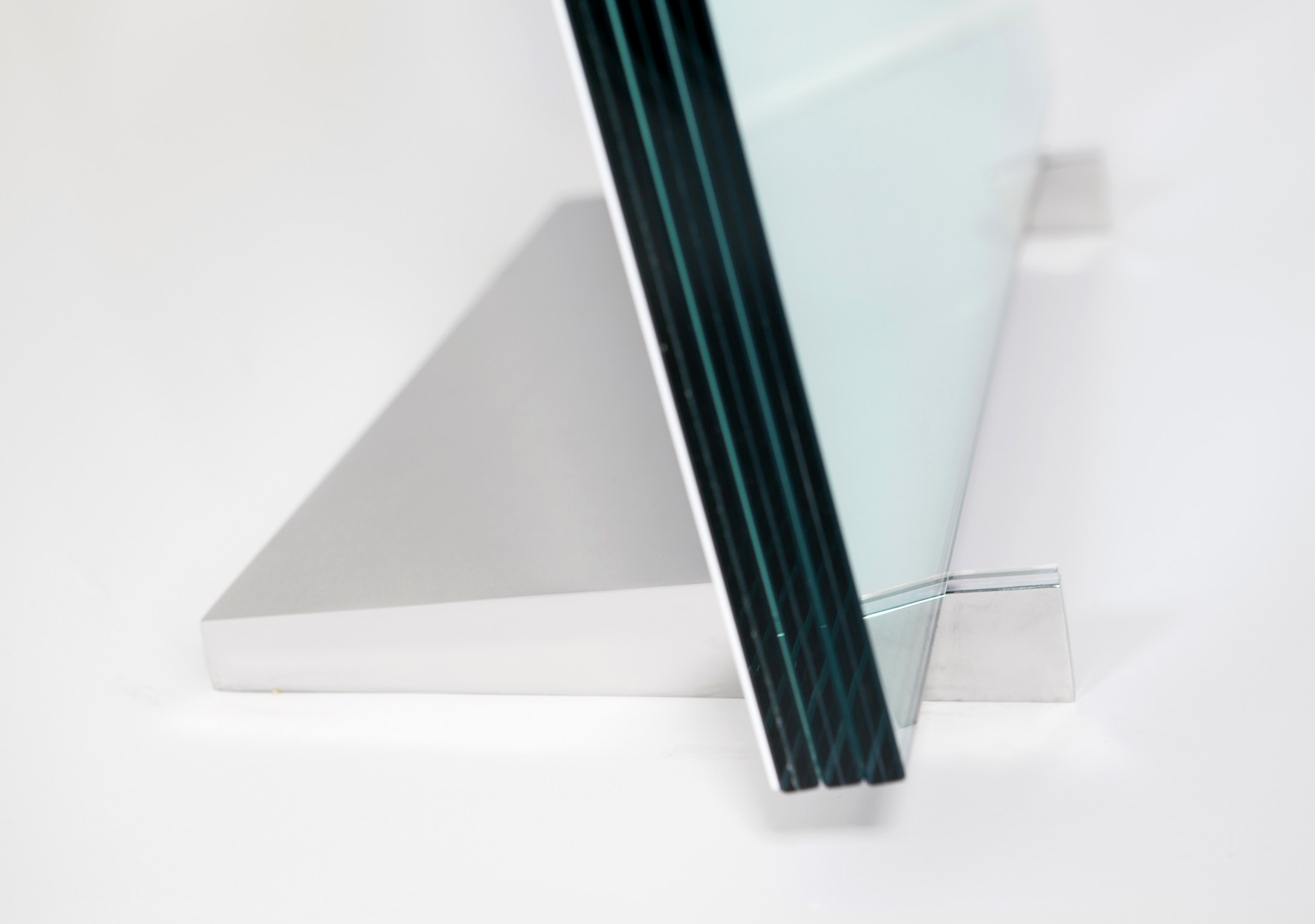
Detail of the Love Me, Love Me Not mirror.
Design Studio Claste’s New Minimalism
Montreal newcomers.
One-year-old Montreal furniture label Claste has created a family of furniture with such subtlety that it is striking. Tension 1.2 is an extension of the label’s inaugural collection from 2017, designed and developed by creative director Quinlan Osborne. Tension 1.2 appears to blush, glint, float, ruminate, refract, and recede. Each piece invites us to scrutinize its smallest details and find something extraordinary in the ordinary. This is collectible design, furniture that pushes the limits of furniture. Tension challenges our assumptions and perceptions around instability and fragility during a moment in history when everything seems uncertain.
Launched at Les Ateliers Courbet gallery this April, the follow-up collection evolves the original’s themes and unconventional pairing of glass and stone. It too plays artfully with contrasts—luminous onyx floating in seamless glass—and unexpected formality, while extending the materials’ palette in the service of similar themes. It taps higher-contrast stones, adds mirrors and upholstery, and in one piece switches marble out for mirror-polished metal.
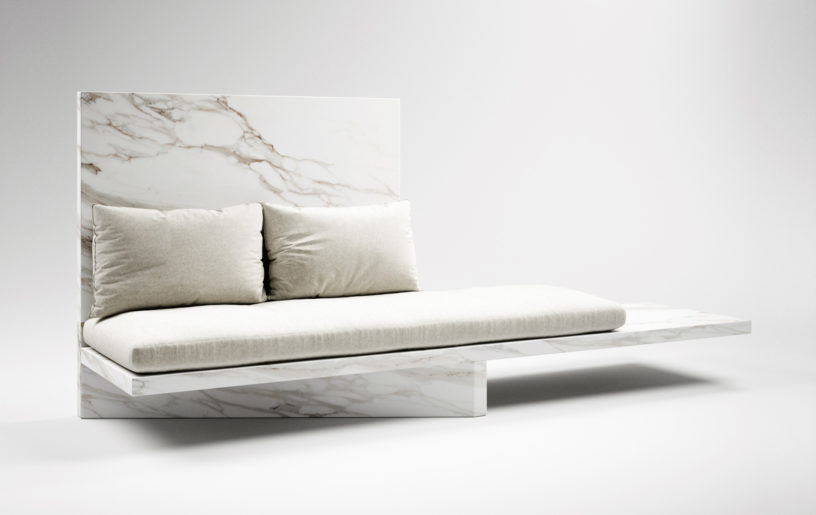
Some Are Born to Sweet Delight sofa.
Irish by birth, Osborne has spent most of his life in Canada and the past 15 years in Montreal. Having studied architecture at the University of Waterloo and the University of Illinois at Chicago, as a professional, Osborne grew increasingly interested in the relationship between an object and its context, between volume and void. (Rounding out the Claste team are Philip Hazan, president, and Martin Poitras, director of sales.) Today, Osborne describes the Tension lines as part of “a new minimalism. There is a trend in furniture and collectible design to create pieces that are elaborate both from a decorative and technical perspective. But I believe there is something pure in expressing complex ideas in a simple manner.” Whereas architecture often requires the concealment of complexity behind simplicity and organization, with furniture the designer can make pure gestures without needing to obscure or disguise anything. “This creates a balance,” Osborne says, “where the design, the idea, and the detail are all one and the same thing.”
Stone suspended in invisibly joined glass, cantilevered marble slabs: the materials are potent, but Claste isn’t about materiality. It’s about the emotion created by the apparently precarious balance of gossamer and geological, rooted and buoyant. The materials are tools used to express surprising ideas about fragility, stability, and permanence. “It is the exploration of these ideas that is the aesthetic of our brand,” says Osborne, who hand-picks every slab of marble himself. “This allows an expansion of the material palette that we use, as these ideas continue to get pushed and pulled in new directions.”
Tension 1.2 is thrilling for its collisions of contradiction. There is a coffee table (called At Swim – Two – Tables) that floats a pyramid of Irish green marble on its head, a weighty cantilever inside a clear glass box. Sharp and cushioned, the monolithic marble planes that collide in the Some Are Born to Sweet Delight sofa are softened by an upholstered cushion. “As a material, upholstery cannot be ignored,” Osborne says. “With the sofa, the luxurious, natural softness of merino wool emphasizes, in a way, the usability of the piece and reinforces the idea that aesthetics and comfort are not mutually exclusive concepts.”
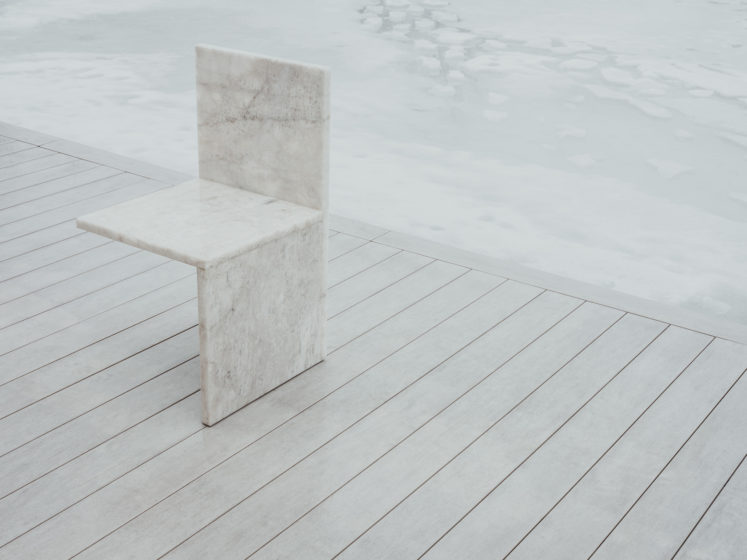
And Here I Sit chair.
Possessing an intriguing depth, Love Me, Love Me Not is a full-length mirror consisting of four layered panes of glass with a mirrored back panel. Glass is perceived by the human eye as transparent, but there are variables that contribute to its clarity. The refraction that occurs when light passes through the two faces of a pane, Osborne points out, creates a nearly imperceptible distortion. By layering several panes together without framing them, Osborne amplifies this. “The fact that there is thickness to a pane of glass gets forgotten because it is nearly always framed, so that the edge is invisible,” he explains. “Adding a mirror to the back of this laminated panel allows us to perceive this distortion as a reflection of ourselves. To see ourselves without the minor blemishes, without the clarity that we often desire, can be refreshing. It is a mirror that does not require perfection.”
In fact, Claste’s notion of minimalism caters not to perfection, opulence, and overconsumption, but to often neglected aspects of luxury, clearing a path to a new sumptuousness in a time of rapidly changing values. “Luxury has become defined more by the curated allocation of time, space, light, and repose, rather than excess and extravagance,” Osborne says. “Ultimately, with Claste, we are looking to develop a brand that reflects the shift in what luxury means in today’s society.”
_________
Never miss a story. Sign up for NUVO’s weekly newsletter, here.






